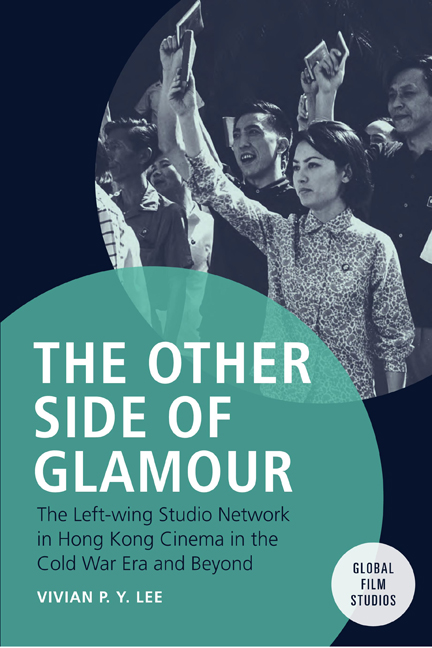 The Other Side of Glamour
The Other Side of Glamour Book contents
- Frontmatter
- Cotents
- List of Figures
- Acknowledgments
- A Note on the Timeline
- Timeline
- Dedication
- 1 Introduction
- 1 The Left-Wing Film Apparatus in Postwar Hong Kong
- 2 Left in the Right Way: Corporate Strategy and the Making of a Popular left-wing
- 3 Remaking Cantonese Film Culture: Union and Sun Luen
- 4 Class, Gender, and Modern Womanhood: Feng Huang and Great Wall
- 5 Corporate Repositioning, Transnational Cultural Brokerage, and Soft Power: Sil-Metropole
- 6 Critical Transitions on the Non-Left: Patrick Lung and Cecile Tang
- 7 From Political Alibis to Creative Incubators: the Left-Wing Film network since the 1980s
- Epilogue
- Bibliography
- Filmography
- Index
2 - Left in the Right Way: Corporate Strategy and the Making of a Popular left-wing
Published online by Cambridge University Press: 17 September 2020
- Frontmatter
- Cotents
- List of Figures
- Acknowledgments
- A Note on the Timeline
- Timeline
- Dedication
- 1 Introduction
- 1 The Left-Wing Film Apparatus in Postwar Hong Kong
- 2 Left in the Right Way: Corporate Strategy and the Making of a Popular left-wing
- 3 Remaking Cantonese Film Culture: Union and Sun Luen
- 4 Class, Gender, and Modern Womanhood: Feng Huang and Great Wall
- 5 Corporate Repositioning, Transnational Cultural Brokerage, and Soft Power: Sil-Metropole
- 6 Critical Transitions on the Non-Left: Patrick Lung and Cecile Tang
- 7 From Political Alibis to Creative Incubators: the Left-Wing Film network since the 1980s
- Epilogue
- Bibliography
- Filmography
- Index
Summary
Chapter 1 has delineated the multidimensional power dynamics that characterized Cold War politics in British Hong Kong and the film production environment under the conditions of the ideological tug-of-war between Taiwan and Mainland China since 1949. Apart from the 1967 anti-British riots and sporadic disturbances to the social and economic status quo caused by union strikes that preceded it, the most enduring batt le was fought in the realm of culture. The local film industry, too, was subject to distinctive forms of cultural politics as studios and practitioners at all levels were drawn into a polarized ideological warfare that soon materialized into more overt forms of institutional interference. While this period of Hong Kong's film history has been discussed in numerous accounts, the task here is not so much a panoramic scanning of events as a perspectival mapping of the filmmaking world in post-World War II Hong Kong. Drawing upon existing sources on the subject, this chapter addresses questions of thematic importance to the present study: What does it mean to be the left, right, and middle in the film industry during the 1950s and 1960s? What was it like to be on the “left ” side of the filmmaking world under the peculiar circumstances of the mini–Cold War? To what extent had the left-wing filmmakers established their own industrial apparatus that would allow them to compete with the major commercial (right-wing) studios in terms of financing, production, and popularity? How successful were these models? This chapter therefore is concerned with the left-wing film apparatus as a corporate entity and their strategic self-positioning in the competitive film market. From this perspective, it is essential to consider exhibition practices of theater circuits to shed light on how the left –right dynamics was played out in the formation and realignment of theater circuits. “How left is the left?”— the concluding question of this chapter—attempts to bring into sharper focus the “middle ground” cultivated by cultural agents on both sides as an ad hoc backdoor to seek temporary relief from the tightrope of Cold War politics.
- Type
- Chapter
- Information
- The Other Side of GlamourThe Left-wing Studio Network in Hong Kong Cinema in the Cold War Era and Beyond, pp. 38 - 58Publisher: Edinburgh University PressPrint publication year: 2020


